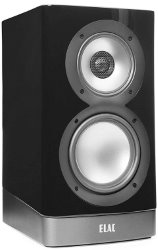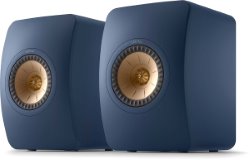ELAC ARB51 Navis vs. KEF LS50 Meta
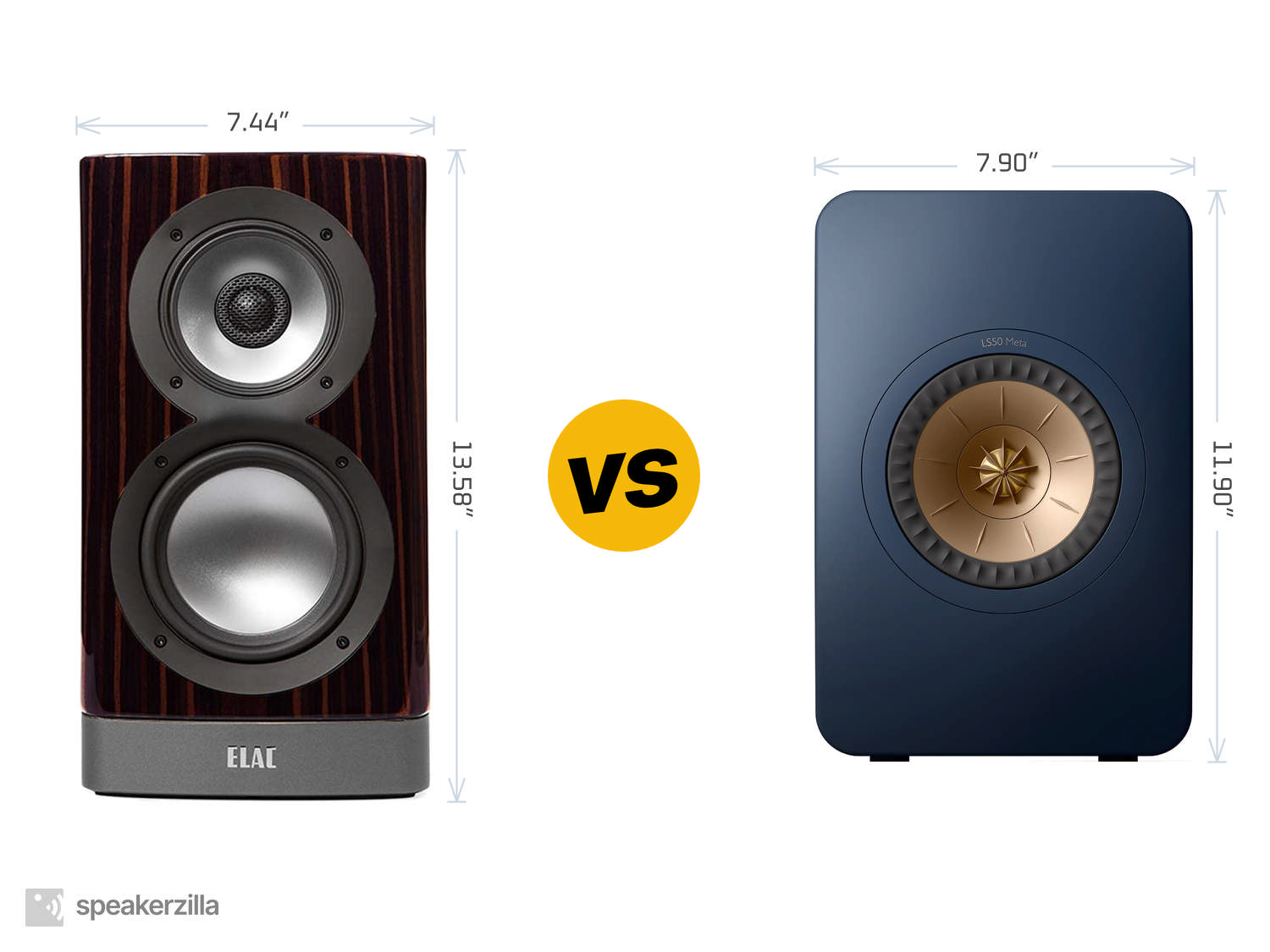
| ELAC ARB51 Navis Powered Bookshelf Speakers | KEF LS50 Meta Bookshelf Speakers |
| MSRP | |
| $2000 | $1600 |
| Dimensions (H × W × D) | |
|
13.58” × 7.44” × 9.45” 345mm × 189mm × 240mm |
11.90” × 7.90” × 11.00” 302mm × 201mm × 279mm |
| Power Type | |
| Powered | Passive |
| Frequency Response | |
| 44-28,000 Hz | 79-28,000 Hz |
| ASR Score | |
| n/a | 4.6 |
| ASR Score w/Subwoofer | |
| n/a | 6.7 |
|
Amazon.com
|
Amazon.com
|
Key Takeaways
TLDR Summary: In the world of high-fidelity sound, the ELAC Navis ARB51 and KEF LS50 Meta stand out as exemplary bookshelf speakers. The ARB51 dazzles with its self-powered convenience and audiophile-grade amplification, delivering a rich and detailed soundstage. The LS50 Meta, on the other hand, boasts KEF's innovative Metamaterial Absorption Technology, offering an extraordinarily pure and natural sound. The ELAC may appeal to those seeking a plug-and-play solution, while the KEF is a go-to for purists craving the latest in acoustic refinement. Both set high bars for clarity, depth, and precision, promising an immersive listening experience for audiophiles.
Speaker Comparison
The world of high-fidelity audio often presents a myriad of choices, but today's focus narrows down to two titans in the realm of premium bookshelf speakers: the ELAC ARB51 Navis Powered Bookshelf Speakers and the KEF LS50 Meta Bookshelf Speakers. Both of these compact powerhouses are designed to deliver an authentic audiophile experience, but they come with their own unique set of features, sonic characteristics, and design philosophies that cater to slightly different audiences. This comparison aims to shed light on those differences and help you understand which set of speakers might best suit your listening preferences and space.
Design & Build Quality
Starting with aesthetics, both the ELAC ARB51 and the KEF LS50 Meta exude a premium feel that one would expect from speakers at their price points. The ELACs present a sleek, no-frills appearance with their traditional box shape, while the KEFs offer a more futuristic vibe with their unique Uni-Q driver array and curved front baffle designed to reduce diffraction. In terms of build quality, both are solidly constructed, but the KEF's use of Metamaterial Absorption Technology (MAT) is a standout feature that not only contributes to its sound but is a radical approach to taming high-frequency resonances.
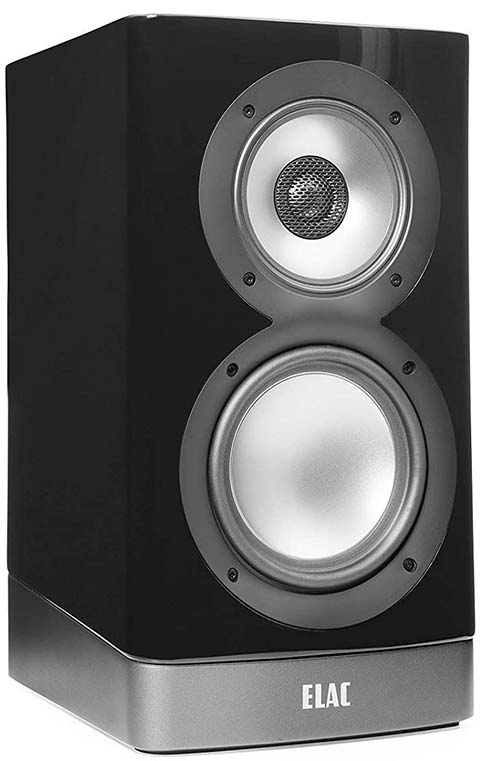
 (at Amazon.com)
(at Amazon.com)Sound Quality
When it comes to sound, the ELAC ARB51 and the KEF LS50 Meta both offer exemplary performance, but they differ in their sound signatures. The ARB51s, with their custom-designed midrange/tweeter concentric driver, deliver a coherent and seamless sound across frequencies. The bass is surprisingly robust for speakers of their size, owing to the powerful onboard BASH amplification. On the other hand, the LS50 Metas, featuring KEF's signature Uni-Q driver and MAT, boast an incredibly pristine and detailed soundstage. The precision of the Meta's imaging is almost palpable, with excellent instrument separation that could easily make them the darling of the detail-oriented listener.
The ELAC's three-way design provides a distinct advantage in the separation of frequency ranges, allowing for a more tailored approach to amplification. The embedded 160-watt BASH amplifier for the lows, 100-watt class AB amplifier for the midrange, and a 40-watt class AB amplifier for the highs give the ARB51s a controlled and dynamic sound across the spectrum. Conversely, the passive design of the LS50 Metas means they'll need a quality external amplifier to shine, but they reward the investment with their nuanced reproduction and outstanding midrange clarity.
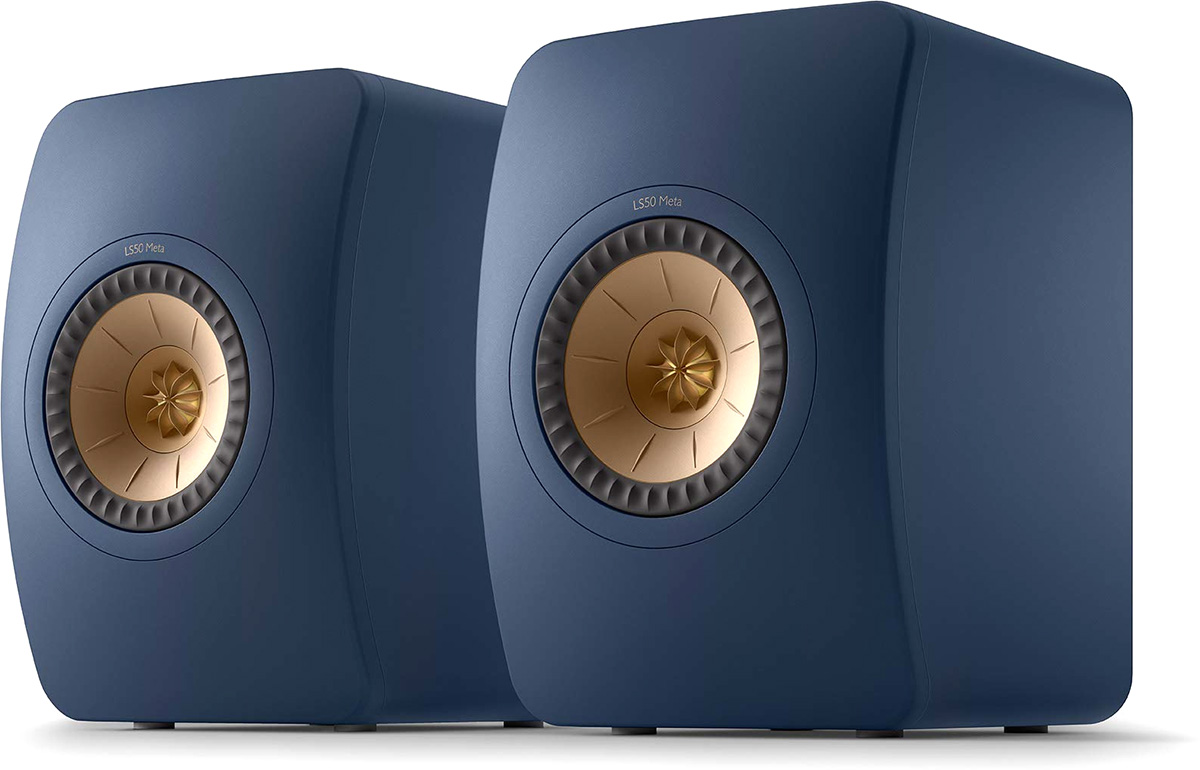
 (at Amazon.com)
(at Amazon.com)Connectivity & Functionality
Functionality is another area where these two diverge. The ELAC ARB51s are fully active speakers, meaning they have built-in amplifiers and just need a source, which could be a turntable, computer, or streaming audio player. This all-in-one approach is fantastic for those who prefer a minimalist setup or are short on space. The KEFs, being passive speakers, open up a world where the listener can pair them with an amplifier of their choosing, which can be seen as a benefit for the enthusiast who likes to fine-tune their system, but it also adds complexity and potential additional cost.
Compare to similar speakers
Moreover, the ELAC ARB51's active design includes a beneficial feature for vinyl lovers—an integrated high-quality phono preamp. This means turntable enthusiasts can connect their record player directly to the speakers without needing an external phono stage. The LS50 Metas, lacking this built-in functionality, require a separate phono preamp to accommodate a turntable, which adds another variable to the system and can either be a drawback or an opportunity for customization, depending on the user's perspective.
Final Verdict
Ultimately, choosing between the ELAC ARB51 Navis Powered Bookshelf Speakers and the KEF LS50 Meta Bookshelf Speakers will come down to personal preference and the intended use. The ARB51s offer a more plug-and-play experience with robust, room-filling sound and the convenience of built-in amplification, making them ideal for those seeking simplicity without sacrificing performance. The LS50 Metas, meanwhile, cater to the audiophile who relishes the prospect of system tweaking, offering unparalleled soundstage precision and the flexibility of amplifier pairing. Regardless of the choice, both sets of speakers stand as testaments to the impressive engineering and passion for audio excellence that ELAC and KEF respectively bring to the table.
- ELAC ARB51 Navis reviews and FAQs
- KEF LS50 Meta reviews and FAQs
Check Current Prices: |
|
|
Amazon.com
|
Amazon.com
|
Affiliate Disclosure: As an Amazon Associate, we earn from qualifying purchases.
